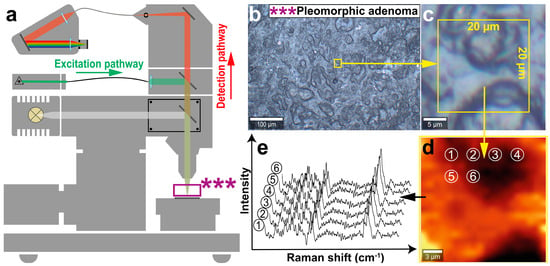Frontiers on Cancer Biomarkers
A topical collection in Diagnostics (ISSN 2075-4418). This collection belongs to the section "Pathology and Molecular Diagnostics".
Viewed by 2901Editors
2. Institute of Pharmacology and Toxicology, Charles University, Faculty of Medicine in Pilsen, alej Svobody 1655/76, 323 00 Pilsen, Czech Republic
Interests: tumor markers in cancer diagnostics and therapy control; hormones; growth factors; therapeutic drug monitoring
Topical Collection Information
Dear Colleagues,
Cancer has probably accompanied humanity since its inception. The earliest cancerous growths in humans were found in Egyptian mummies dating back to ∼1500 BC. The first case of cancer in modern medicine was described in 1775 by a British surgeon by the name of Percivall Pott. At present, despite advanced treatment methods, early diagnosis is still a prerequisite for successful treatment.
Cancer biomarkers and advanced imaging techniques are the cornerstones of cancer diagnostics. The first cancer biomarker was reported in an 1848: the light chain of immunoglobulin that is present in the urine of myeloma patients. The modern era of monitoring malignant disease, however, began in the 1960s with the discovery of alpha-fetoprotein (AFP) and carcinoembryonic antigen (CEA); these discoveries were followed by the introduction of newly developed diagnostic techniques such as the radioimmunoassay. Subsequent progress was made in the 1980s when hybridoma technology enabled the development of cancer carbohydrate, prostate-specific, and other antigens that are still routinely used and are considered "classic" tumor markers. The past decade of biomarker development has been characterized by the completion of a number of genome-sequencing projects and the discovery of oncogenes and tumor-suppressor genes. Recent technologies are capable of performing parallel, not only serial analyses, and such new strategies represent a paradigm shift in the search for novel biomarkers.
In general, the current process in cancer biomarker development can be divided into five phases: preclinical studies; clinical assay development and validation; retrospective longitudinal studies; prospective screening; and randomized control trials.
This Issue will provide updates in the field of cancer biomarkers and introduce new techniques that are being used in their detection and development.
Prof. Dr. Radek Kučera
Dr. Jan Tkac
Collection Editors
Manuscript Submission Information
Manuscripts should be submitted online at www.mdpi.com by registering and logging in to this website. Once you are registered, click here to go to the submission form. Manuscripts can be submitted until the deadline. All submissions that pass pre-check are peer-reviewed. Accepted papers will be published continuously in the journal (as soon as accepted) and will be listed together on the collection website. Research articles, review articles as well as short communications are invited. For planned papers, a title and short abstract (about 100 words) can be sent to the Editorial Office for announcement on this website.
Submitted manuscripts should not have been published previously, nor be under consideration for publication elsewhere (except conference proceedings papers). All manuscripts are thoroughly refereed through a single-blind peer-review process. A guide for authors and other relevant information for submission of manuscripts is available on the Instructions for Authors page. Diagnostics is an international peer-reviewed open access semimonthly journal published by MDPI.
Please visit the Instructions for Authors page before submitting a manuscript. The Article Processing Charge (APC) for publication in this open access journal is 2600 CHF (Swiss Francs). Submitted papers should be well formatted and use good English. Authors may use MDPI's English editing service prior to publication or during author revisions.
Keywords
- cancer
- biomarkers
- diagnostics
- prognosis
- recurrence
- metastasis
- therapy control
- development
- proteins
- glycoproteins









